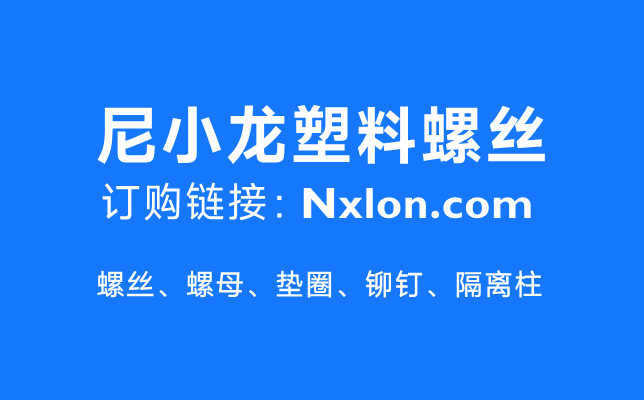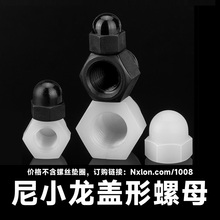Cross Recessed Pan Head Self-drilling and Self-tapping Screw
©Nxlon.com D/T:

The cross recessed pan head self-drilling and self-tapping screw is a commonly used fastener. The following is the relevant introduction to the cross recessed pan head self-drilling and self-tapping screw:
Structural Features of the Cross Recessed Pan Head Self-drilling and Self-tapping Screw
Cross Recessed Head: It adopts a cross-shaped groove design and is used in conjunction with a cross screwdriver. This groove type facilitates the accurate insertion of the screwdriver, can effectively transmit torque, and enables quick tightening and disassembly. Moreover, compared with the slotted head, the cross recessed head is less likely to slip out during operation, improving work efficiency and the convenience of use.
Pan Head Shape: The pan head is circular and has a relatively large diameter, which can provide a large bearing area. When tightening the screw, the pan head can evenly distribute the force on the surface of the connected component, reducing the pressure per unit area, avoiding excessive extrusion or damage to the surface of the connected component, and at the same time making the connection more firm and flat.
Self-drilling and Self-tapping Function: The tip of the screw has a special cutting edge, which can directly drill into connected components made of various materials such as metal, plastic, and wood without pre-drilling. During the drilling process, the threaded part will simultaneously extrude a matching internal thread to achieve a self-tapping connection, greatly simplifying the installation process and improving work efficiency.
Materials and Surface Treatments of the Cross Recessed Pan Head Self-drilling and Self-tapping Screw
Materials: It usually uses materials such as carbon steel and stainless steel. The cross recessed pan head self-drilling and self-tapping screw made of carbon steel has high strength and hardness, can meet the connection requirements in general industrial and construction fields, and has a relatively low cost. The stainless steel material has excellent corrosion resistance and oxidation resistance, and is suitable for corrosive environments such as humidity, acid and alkali, such as chemical equipment, food processing equipment, outdoor facilities, etc., which can ensure that the screw will not rust or corrode during long-term use and guarantee the reliability of the connection.
Surface Treatments: Common surface treatments include galvanizing, nickel plating, phosphating, etc. Galvanizing treatment can form a zinc layer on the surface of the screw, effectively improving its corrosion resistance and preventing rust. This is a widely used surface treatment method, suitable for most conventional environments. Nickel plating treatment can not only enhance the corrosion resistance of the screw but also make the surface smoother and more beautiful, and at the same time improve the surface hardness and wear resistance, and is often used in occasions with high requirements for appearance and corrosion resistance. Phosphating treatment is to form a phosphate protective film on the surface of the screw, which can improve the wear resistance, lubricity, and corrosion resistance of the screw, especially suitable for screws that need to work in harsh environments.
Specifications and Dimensions of the Cross Recessed Pan Head Self-drilling and Self-tapping Screw
Thread Specifications: Common ones include M3, M4, M5, M6, M8, etc. Different thread specifications are suitable for different connection strength requirements and the thickness of the connected components. Smaller thread specifications such as M3 and M4 are suitable for connecting thinner plates or plastic parts, while larger thread specifications such as M6 and M8 can be used for connecting thicker metal plates or in situations where a large tensile force needs to be borne.
Length Dimensions: Generally, it is between 6mm and 60mm, and the specific length is determined according to actual usage requirements. Shorter screws are suitable for thinner connected components, while longer screws can be used for connecting multiple layers of materials or thicker workpieces.
Application Fields of the Cross Recessed Pan Head Self-drilling and Self-tapping Screw
Construction Industry: In construction decoration projects, it is often used to fix materials such as gypsum boards, fiberboards, and metal plates to keels or frames. Its self-drilling and self-tapping function can quickly achieve connections on various building materials without pre-drilling, improving construction efficiency, and ensuring the firmness of the connection to meet the stability requirements of the building structure.
Electronic Equipment Manufacturing: During the assembly process of electronic equipment, such as computer cases, server cabinets, and mobile phone casings, cross recessed pan head self-drilling and self-tapping screws are often used. It can quickly and firmly connect various components of electronic equipment together. At the same time, due to its more aesthetically pleasing pan head design, it can also meet the appearance requirements of electronic equipment. In addition, the self-drilling and self-tapping function can avoid problems such as cracking or deformation that may occur when drilling on thin materials, ensuring the assembly quality of electronic equipment.
Furniture Manufacturing: In furniture production, especially during the assembly process of panel furniture and solid wood furniture, this kind of screw is widely used. It can connect various parts of the furniture, such as table legs, chair backs, and cabinet doors, to the furniture frame. The self-drilling and self-tapping function makes it more convenient and quicker to install screws on wood or artificial panels without the need for pre-drilling, and the cross recessed design can ensure the accuracy and force control during tightening, making the assembly of furniture more efficient and the connection more stable.
Installation Precautions for the Cross Recessed Pan Head Self-drilling and Self-tapping Screw
Select Appropriate Tools: Use a cross screwdriver or an electric or pneumatic screwdriver that matches the screw specifications. Ensure that the size and shape of the screwdriver head are completely consistent with the cross recessed groove to ensure that the torque can be effectively transmitted during the tightening or disassembly process and avoid damaging the cross recessed groove of the screw head.
Control the Tightening Force: Although the cross recessed pan head self-drilling and self-tapping screw has a self-tapping function, attention still needs to be paid to controlling the tightening force during installation. Over-tightening may cause the screw to break, the connected component to deform, or the thread to be damaged; while insufficient tightening force may make the connection insecure and cause the screw to loosen during use. Generally, the appropriate tightening torque should be determined according to factors such as the screw specifications, materials, and the material and thickness of the connected component, in accordance with relevant standards or experience.
Pay Attention to the Installation Angle: Keep the screw perpendicular to the surface of the connected component during installation, so that the screw can be smoothly drilled into the connected component and ensure the uniformity and integrity of the self-tapping thread. If the installation angle is inclined, it may cause the thread to be twisted and incomplete, affecting the connection strength, and may even cause the screw to be unable to be drilled in normally or break during the drilling process.
Clean the Installation Site: Before installing the screw, it is necessary to clean the oil stains, dust, sundries, etc. on the surface of the connected component to ensure good contact between the screw and the connected component and improve the reliability of the connection. At the same time, cleaning the installation site can also prevent these impurities from entering the thread gap and affecting the formation of the self-tapping thread and the tightness of the connection.
尼小龙塑料螺丝-塑料螺母-尼龙垫圈-塑料铆钉
绝缘尼龙垫圈塑料垫片
订购链接:Nxlon.com/1010
绝缘尼龙垫圈塑料垫片是以尼龙为材质的平垫圈,在电子、机械等领域应用广泛,尼龙垫圈材质:尼龙66,颜色:黑色;规格:公称内径*公称外径*公称厚度
R2648-塑料铆钉-尼龙铆钉
订购链接:Nxlon.com/2648
R2648-塑料铆钉-尼龙铆钉塑料铆钉-尼龙铆钉-汽车塑胶铆钉-尼小龙尼龙铆钉R2.6R3.5R4R5塑胶柳钉子母铆钉快捷紧固件塑料卡扣。
R3055-塑料铆钉-尼龙铆钉
订购链接:Nxlon.com/3055
R3055-塑料铆钉-尼龙铆钉塑料铆钉-尼龙铆钉-汽车塑胶铆钉-尼小龙尼龙铆钉R2.6R3.5R4R5塑胶柳钉子母铆钉快捷紧固件塑料卡扣。
R3560-塑料铆钉-尼龙铆钉
订购链接:Nxlon.com/3560
R3560-塑料铆钉-尼龙铆钉塑料铆钉-尼龙铆钉-汽车塑胶铆钉-尼小龙尼龙铆钉R2.6R3.5R4R5塑胶柳钉子母铆钉快捷紧固件塑料卡扣。
R2024-塑料铆钉-尼龙铆钉
订购链接:Nxlon.com/2024
R2024-塑料铆钉-尼龙铆钉塑料铆钉-尼龙铆钉-汽车塑胶铆钉-尼小龙尼龙铆钉R2.6R3.5R4R5塑胶柳钉子母铆钉快捷紧固件塑料卡扣。
绝缘塑料SS扣式PC板隔离柱
订购链接:Nxlon.com/1009
尼小龙SS隔离柱是一种PC板隔离柱,由塑料PA66材质制成 。从外观上看,呈圆柱状,颜色通常为白色、黑色,柱体一端有开口结构设计 ,整体造型简洁规整。标注显示其柱内没有螺纹,区别于一些带有螺纹的隔离柱产品。









